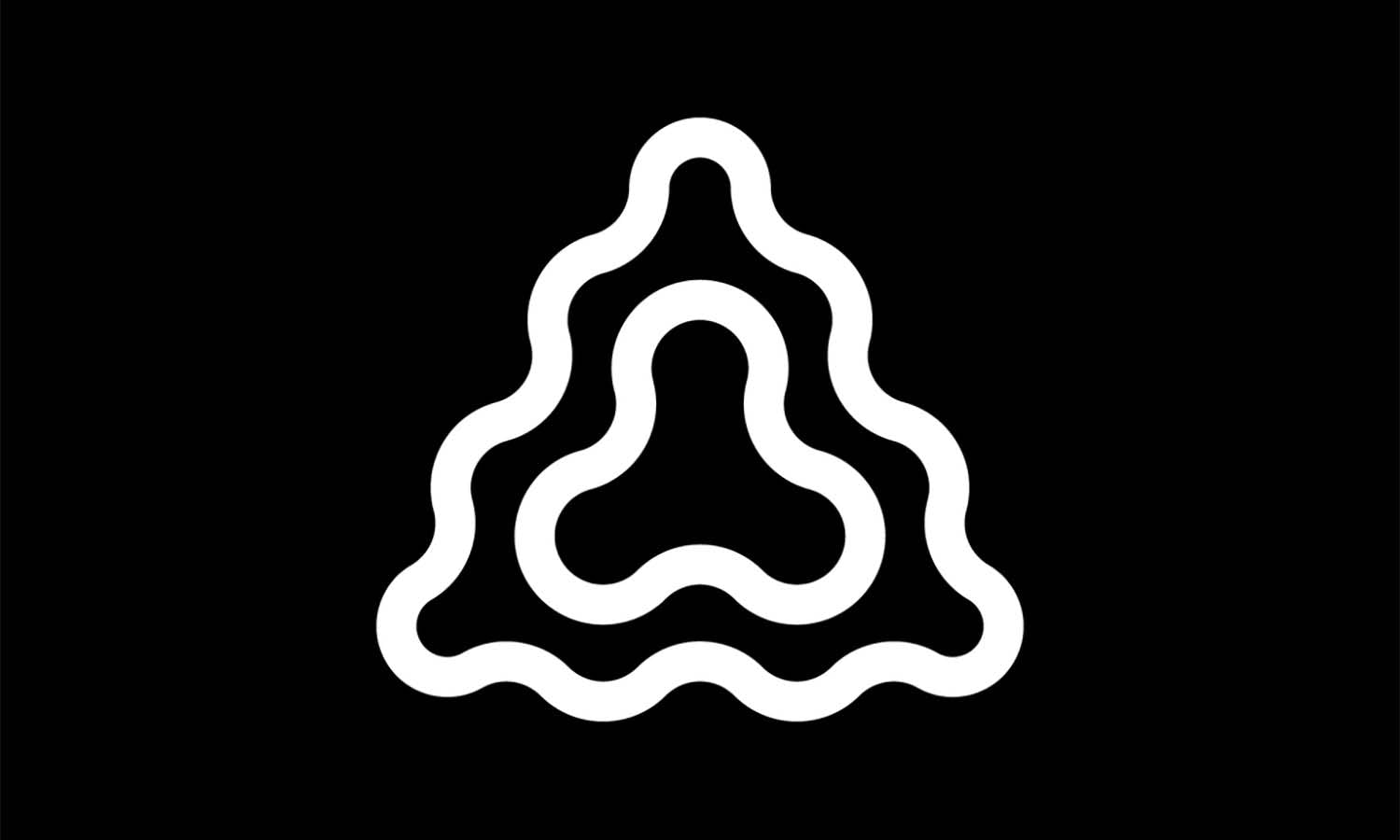How To Check If If Someone Copied Your Logo Design

In today's digital age, logo design stands as a cornerstone of branding and identity for businesses worldwide. It's more than just a visual representation; it's the face of a company, often making the first impression on potential clients and customers. However, as the digital world grows and tools become more accessible, there has been a rising concern in the design community about original logos being copied. This illicit replication, whether intentional or accidental, poses a risk to brands that have worked hard to establish their unique identity.
As the saying goes, imitation may be the sincerest form of flattery, but in the realm of logo design, it can undermine the very essence of a brand's uniqueness and authenticity. Identifying and addressing such instances where your logo design has been copied is essential, not just for the integrity of your brand but also for the broader respect and recognition of intellectual property in the design world. Join us as we delve into understanding this phenomenon, its implications, and how you can safeguard your brand's visual identity.
Why Do Logos Get Copied?
The realm of logo design is vast and ever-evolving. With millions of logos crafted every year, one might wonder: how can each one be genuinely unique? This question becomes even more pressing when we encounter instances of logos being conspicuously copied or strikingly similar. But what drives this imitation in the design world? Let’s unpack some reasons.
Ease of Digital Reproduction
In the age of the Internet, replicating a logo design is often just a matter of a few clicks. Free vector images, editable templates, and user-friendly design software have democratized design, making it accessible to even those without formal training. While this is an empowering shift in many ways, it also creates a breeding ground for duplication. Some designers, particularly those starting out or operating under tight deadlines, might take shortcuts, leading to designs that borrow heavily from others.
Lack of Design Knowledge
Not every person claiming to be a designer has been through rigorous training or has a deep understanding of design principles. This is not to undermine self-taught artists, many of whom are incredibly talented, but rather to highlight that gaps in knowledge or exposure can lead to inadvertent similarities. A designer unfamiliar with the vast landscape of existing logos might genuinely believe their creation is original, not realizing it closely resembles another brand's logo. Without a comprehensive understanding of design history and current trends, it's easy to inadvertently create something that's already out there.
Intentional Plagiarism
While the previous points discussed unintentional copying, it's an unfortunate truth that some entities deliberately replicate logos. They do this for various reasons:
- Leveraging Established Recognition: Some businesses, especially newer or less reputable ones, might copy the logo design of established brands to tap into their recognition. This deceptive strategy is aimed at confusing consumers or making them associate the imitator with the qualities of the established brand.
- Saving Costs and Time: Crafting a unique and effective logo requires time, effort, and often monetary investment. Some entities might opt to cut corners, copying an existing design rather than investing in an original one.
- Mistaken Belief in Anonymity: In a vast digital world, some might think that copying a logo from a distant corner of the world would go unnoticed. This false sense of anonymity emboldens them to use copied designs, underestimating the global reach of today's digital platforms.
The 'Universal Mind' Phenomenon
At times, designers, despite their best intentions, might end up with designs that look similar due to converging inspiration or zeitgeist. It's not uncommon for artists working independently to arrive at similar conclusions based on shared influences, trends, or societal shifts. In such cases, the similarity is not a result of copying but a manifestation of the 'universal mind' or collective consciousness.
Simplicity in Modern Design
The modern trend leans heavily towards minimalistic and simplistic designs. While this has led to some iconic and clean logos, it also means there's a reduced palette of shapes, colors, and fonts designers use. With everyone drawing from the same minimalistic playbook, unintentional similarities can and do arise.
In conclusion, while the world of logo design thrives on creativity and innovation, instances where logos get copied are unfortunately not rare. Recognizing the reasons behind such occurrences is the first step in addressing and preventing them. Whether it's the lure of digital tools, gaps in knowledge, deliberate plagiarism, or the challenges posed by contemporary design trends, understanding these factors helps in fostering a culture that respects and prioritizes originality.

Steps to Check if Your Logo Design Has Been Copied
As the importance of branding continues to surge in the digital age, ensuring the originality and authenticity of a logo design becomes paramount. While you've poured time, effort, and creativity into your design, how do you ascertain that it hasn't been copied? Here are the steps to help you navigate this crucial aspect of brand protection.
Google Image Search
Often, the first and most accessible step is leveraging Google's vast database:
- Reverse Image Search: By simply uploading an image of your logo to Google Images, you can initiate a search to find visually similar images on the web. This could quickly highlight instances where your logo design might have been replicated or used without permission.
- Interpret Results: While you might find visually similar logos, it's essential to discern whether they are direct copies or just coincidental resemblances. Understanding the nuances can save you potential misunderstandings and conflicts.
TinEye
TinEye is a specialized image search engine with a focus on reverse image search:
- How It Works: Upload your logo, and TinEye will scour the internet for exact matches or close resemblances. It can even track edited versions of your logo design.
- Benefits Over Google: While Google is vast, TinEye often delves deeper, presenting results from niche websites or platforms that Google might miss.
Check Logo Design Communities and Platforms
For many designers, platforms like Behance, Dribbble, and LogoPond are quintessential spaces for showcasing their work. While they serve as hubs of creativity, they're also spots where copied designs might surface:
- Regular Monitoring: Periodically check these platforms using keyword searches related to your logo's theme or industry. For instance, if your logo is for a bakery, using keywords like "bakery logo design" might yield relevant results.
- Community Feedback: These platforms thrive on community feedback. If a copied logo appears, fellow designers might have already flagged it in the comments.
Utilize Paid Services
Investing in services that monitor brand and logo use can be a proactive approach:
- Brand Monitoring Tools: Platforms like Brandstock and Markify can provide regular alerts on potential infringements, ensuring that you stay updated on any unauthorized use of your logo design.
- Coverage: While these services come at a cost, they often offer more comprehensive monitoring, covering international databases, patent offices, and more obscure digital spaces.
Consult with a Trademark Attorney
Engaging with legal professionals can provide a more detailed and assured check:
- Trademark Searches: Attorneys can perform extensive searches in trademark databases to ensure your logo hasn't been copied and registered elsewhere.
- Legal Implications: If your logo design has been copied, understanding the legal routes available becomes crucial. An attorney can guide you on potential actions, from cease and desist letters to full-fledged lawsuits.
Engage with Design Networks
Sometimes, the best eyes are those of fellow designers:
- Networking: Engage with design communities, both online and offline. Share your designs and encourage peers to alert you if they see something suspicious.
- Collaborative Vigilance: The design world thrives on mutual respect and collaboration. Tapping into this network can act as an early warning system against copied designs.
In conclusion, the journey of ensuring that your logo design remains unique in the vast expanse of the digital world may seem daunting. However, with the right tools and a vigilant approach, you can safeguard your intellectual property effectively. Remember, while the digital age has made copying easier, it has also equipped designers with potent tools to counteract such infringements. By regularly monitoring and being proactive, you can ensure that your logo's authenticity remains intact, preserving the brand's trust and recognition it deserves.

How to Respond if Your Logo Design Has Been Copied
The discovery that your carefully crafted logo design has been copied can evoke a gamut of emotions: from shock and betrayal to anger. While these feelings are valid, it's imperative to respond with a clear, measured approach. Here's a step-by-step guide on how to address this unsettling situation.
Document Everything
Before taking any action, gather evidence:
- Screenshots: Capture clear screenshots of the copied logo from wherever you've discovered it—whether it's a website, social media, or a digital marketplace. Ensure that these screenshots are dated.
- Original Design Files: Locate and secure your original design files, drafts, and any email communication or contracts related to the logo. This serves as proof of your originality and timestamps.
Reach Out Amicably
While it's easy to assume malicious intent, it's possible the copying party is unaware of the infringement:
- Open a Dialogue: Draft a polite yet firm email or message. Describe your concerns, present your evidence, and ask for clarification. It's possible they procured the design from a third-party, believing it to be original.
- Seek Resolution: If they acknowledge the oversight, request the removal of the copied logo and discuss potential solutions, such as them adopting a new logo or compensating for the unauthorized use.
Engage a Mediator
If direct communication doesn’t yield results, consider mediation:
- Hire a Professional: Engage a mediator experienced in intellectual property disputes. They can facilitate a dialogue between both parties, striving for an amicable resolution.
- Draft an Agreement: If both parties come to a consensus, ensure it's documented in a legally binding agreement to prevent future disputes.
Seek Legal Counsel
If amicable efforts don't bring about a solution, it's time to consult with legal professionals:
- Trademark Attorney: Engage a lawyer specializing in trademarks and intellectual property. They can advise on the viability of legal action based on the evidence and the potential consequences of the copied logo design.
- Cease and Desist Letter: Before moving to court, an attorney might recommend sending a cease and desist letter—a formal document demanding the offending party stop using the copied design. It outlines potential legal actions if the demand isn't met.
Pursue Legal Action:
If all else fails and the copied design causes significant brand confusion or financial loss, it might be time to file a lawsuit
- Collect Evidence: Alongside your attorney, gather comprehensive evidence that showcases the originality of your design and the potential harm the copied logo causes.
- File a Lawsuit: This is a significant step, both in terms of time and financial investment. Ensure that you're prepared for the process and have weighed the potential gains against the costs.
Public Awareness
Sometimes, bringing the issue to the public can lead to faster resolutions:
- Social Media: Without resorting to defamation, share your story and evidence on platforms like Twitter, Instagram, or LinkedIn. The court of public opinion can exert pressure on the copying party.
- Media Outlets: If your case is particularly egregious or involves well-known brands, consider reaching out to media outlets. Coverage can amplify your voice and potentially expedite resolutions.
In conclusion, discovering a copied logo design is undoubtedly distressing, but it's vital to approach the situation methodically. While the digital age has facilitated easier replication of designs, it's also empowered original designers with tools and platforms to defend their intellectual property rights. Whether it's through open dialogue, legal avenues, or public opinion, ensuring your brand's integrity remains uncompromised is paramount. Remember, while a logo is a visual entity, it encapsulates a brand's ethos, values, and identity—making its protection indispensable.

Prevention is Better than Cure: Safeguarding Your Logo Design
In the dynamic realm of branding and logo design, originality is currency. But as the adage goes, "prevention is better than cure." Instead of finding oneself in the labyrinthine process of defending a design's uniqueness, taking proactive steps to prevent your logo from being copied can save time, resources, and distress. Here's a guide to fortifying your brand's visual identity from potential infringements.
Trademark Your Logo
A surefire way to protect your logo design is to trademark it:
- Legal Protection: A trademark provides legal recourse against unauthorized use. Once your logo is trademarked, it's recognized as your property in the eyes of the law.
- National & International Registration: Depending on your business's scope, consider registering the trademark both nationally and internationally to ensure broader protection.
Watermark Design Proposals
When presenting logo designs to potential clients or showcasing them online, using watermarks can deter unauthorized copying:
- Overlay: A faint overlay across the design can prevent replication while not obscuring the design's essence for viewers.
- Removal Upon Finalization: Once a client selects and pays for a design, the watermark can be removed, transferring the pristine logo for their use.
Educate Clients
Sometimes, copying arises from ignorance rather than malice:
- Discuss Originality: When delivering the final logo design, discuss its originality and the importance of maintaining it. Inform them about potential pitfalls and legal repercussions of using copied designs.
- Provide Usage Guidelines: A brand guideline can be invaluable. It not only instructs on the logo's correct usage but also emphasizes its unique elements, subtly underlining its distinctiveness.
Keep a Detailed Design Process Journal
Documenting the evolution of your logo can prove its originality:
- Sketches and Drafts: Maintain all initial sketches, drafts, and iterations. This paper trail can demonstrate the organic development of your design, proving its authenticity.
- Design Rationale: Documenting the rationale behind each design choice—from color palettes to typography—provides a narrative, reinforcing the logo's unique genesis.
Stay Updated with Industry Trends
To ensure your logo stands out and isn’t inadvertently similar to others:
- Regular Market Scans: Periodically scan the market, especially within your industry, to be aware of prevalent design trends and existing logos.
- Avoid Generic Templates: While templates can be time-savers, they can also lead to designs that are eerily similar to others. Always strive for originality, even when drawing inspiration from templates.
Use Online Monitoring Tools
Proactively monitoring the internet for copies can nip potential issues in the bud:
- Google Alerts: Set up alerts for your brand name and variations. While primarily for textual content, it can flag instances where your logo might be used alongside your brand name without authorization.
- Visual Search Tools: Periodically use tools like Google Image Search or TinEye to check for visual content resembling your logo.
Build Strong Relationships with Other Designers
Networking can serve as an informal safeguard:
- Community Vigilance: Share your work with fellow designers. A collective watchful eye can alert you to potential copies before they become widespread issues.
- Feedback Loop: Engaging in design communities can also provide feedback on unintentional resemblances, helping tweak designs before they go public.
In the world of logo design, the line between inspiration and imitation can sometimes blur. However, by taking preemptive measures, designers can ensure their creations remain untarnished by the shadows of duplication. Prevention not only shields a design from being copied but also preserves the trust and recognition a brand cultivates over time. In this digital age, where replication is just a click away, arming oneself with knowledge and tools to safeguard originality is not just wise—it's essential.
Conclusion
In the vast landscape of branding, a logo design stands as a beacon of a company's identity. Its uniqueness not only differentiates a brand but also instills trust and recognition among audiences. Therefore, protecting it from being copied is paramount. By being proactive, understanding the intricacies of design copyrights, and leveraging modern tools, designers and businesses can ensure their logos remain authentic and distinctive. Remember, in this digital age, while imitation might be the sincerest form of flattery, it's the originality that leaves an indelible mark.
Let Us Know What You Think!
These fantastic logo design articles are written and curated by Kreafolk's team. We hope you enjoy our information and remember to leave us a comment below. Cheers!













Leave a Comment